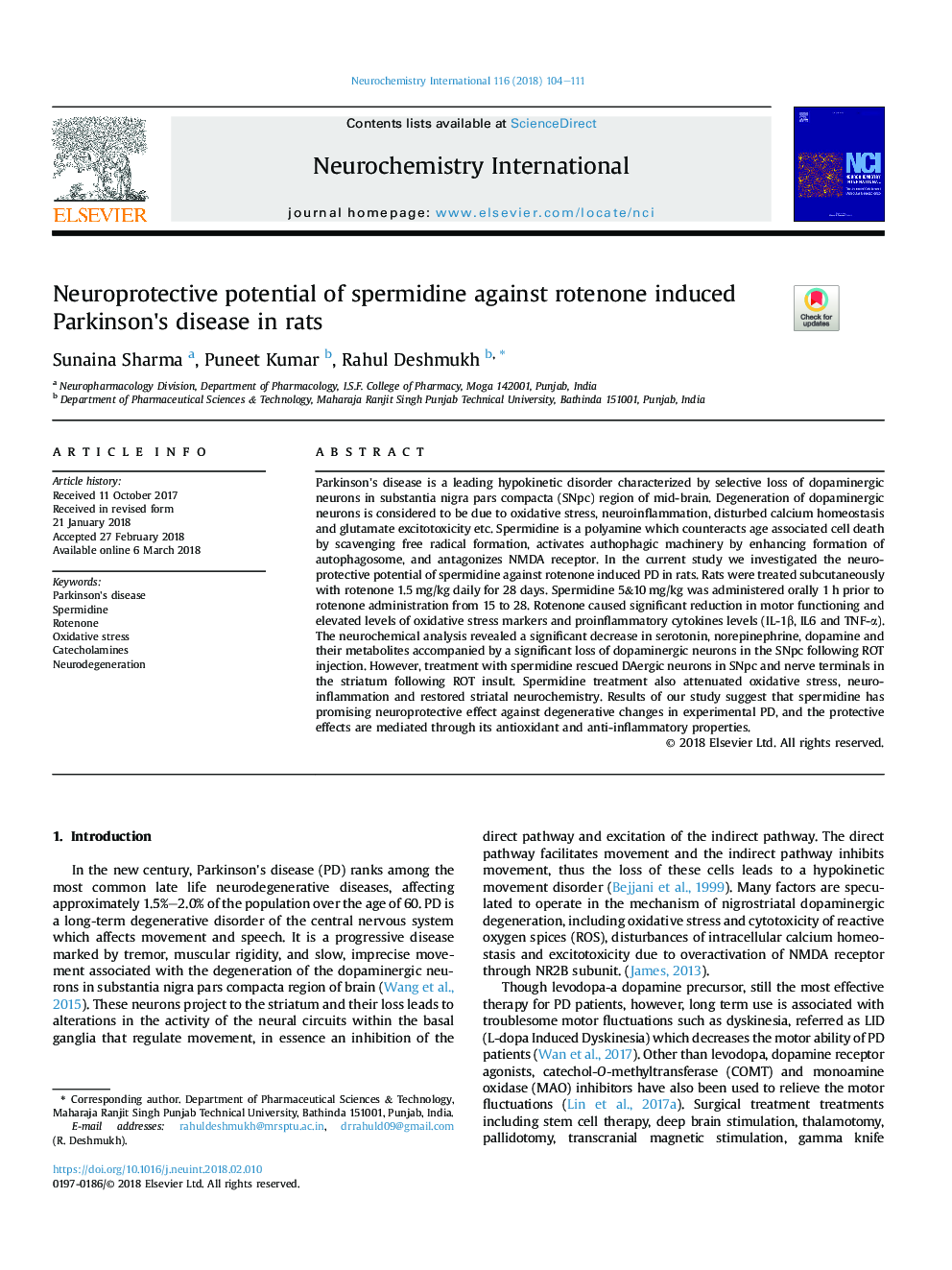| کد مقاله | کد نشریه | سال انتشار | مقاله انگلیسی | نسخه تمام متن |
|---|---|---|---|---|
| 8478940 | 1551259 | 2018 | 8 صفحه PDF | دانلود رایگان |
عنوان انگلیسی مقاله ISI
Neuroprotective potential of spermidine against rotenone induced Parkinson's disease in rats
ترجمه فارسی عنوان
پتانسیل نوروپروتئین اسپرمیدین علیه روتنون باعث ایجاد پارکینسون در موش صحرایی می شود
دانلود مقاله + سفارش ترجمه
دانلود مقاله ISI انگلیسی
رایگان برای ایرانیان
کلمات کلیدی
بیماری پارکینسون، اسپمریدین، روتنون، استرس اکسیداتیو، کاتلولامین ها، عصب مغزی
موضوعات مرتبط
علوم زیستی و بیوفناوری
بیوشیمی، ژنتیک و زیست شناسی مولکولی
بیولوژی سلول
چکیده انگلیسی
Parkinson's disease is a leading hypokinetic disorder characterized by selective loss of dopaminergic neurons in substantia nigra pars compacta (SNpc) region of mid-brain. Degeneration of dopaminergic neurons is considered to be due to oxidative stress, neuroinflammation, disturbed calcium homeostasis and glutamate excitotoxicity etc. Spermidine is a polyamine which counteracts age associated cell death by scavenging free radical formation, activates authophagic machinery by enhancing formation of autophagosome, and antagonizes NMDA receptor. In the current study we investigated the neuroprotective potential of spermidine against rotenone induced PD in rats. Rats were treated subcutaneously with rotenone 1.5â¯mg/kg daily for 28 days. Spermidine 5&10â¯mg/kg was administered orally 1â¯h prior to rotenone administration from 15 to 28. Rotenone caused significant reduction in motor functioning and elevated levels of oxidative stress markers and proinflammatory cytokines levels (IL-1β, IL6 and TNF-α). The neurochemical analysis revealed a significant decrease in serotonin, norepinephrine, dopamine and their metabolites accompanied by a significant loss of dopaminergic neurons in the SNpc following ROT injection. However, treatment with spermidine rescued DAergic neurons in SNpc and nerve terminals in the striatum following ROT insult. Spermidine treatment also attenuated oxidative stress, neuroinflammation and restored striatal neurochemistry. Results of our study suggest that spermidine has promising neuroprotective effect against degenerative changes in experimental PD, and the protective effects are mediated through its antioxidant and anti-inflammatory properties.
ناشر
Database: Elsevier - ScienceDirect (ساینس دایرکت)
Journal: Neurochemistry International - Volume 116, June 2018, Pages 104-111
Journal: Neurochemistry International - Volume 116, June 2018, Pages 104-111
نویسندگان
Sunaina Sharma, Puneet Kumar, Rahul Deshmukh,
